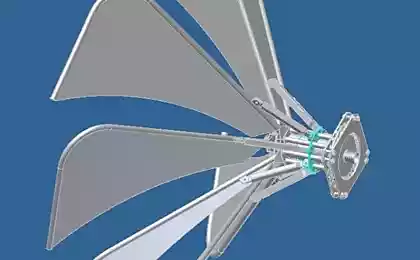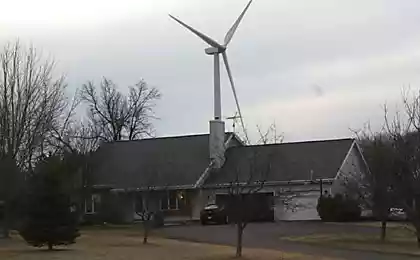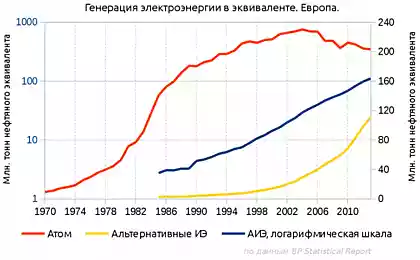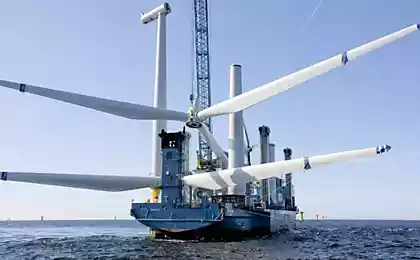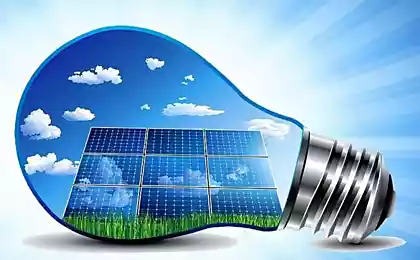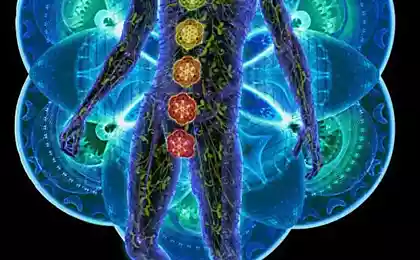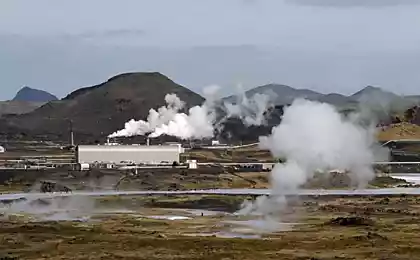643
Simply about the difficult: what is alternative energy?
In recent years, alternative energy has become a subject of intense interest and heated debate. Under the threat of climate change and the fact that the average global temperature continues to rise with each passing year, the desire to find forms of energy that will reduce dependence on fossil fuels, coal, and other polluting processes, naturally grown.
While most of the concepts of alternative energy are not new, only in the last few decades this issue has become finally relevant. Due to improvements in technology and production, the cost of most forms of alternative energy decreased while the efficiency increased. What is alternative energy, speaking in simple and clear words, what is the probability that it will become mainstream?
Obviously, there are still some disputes about what constitutes "alternative energy" and what this phrase can be applied. On the one hand, this term can be attributed to the forms of energy that do not increase the carbon footprint of mankind. So it can include nuclear facilities, hydroelectric power and even natural gas and "clean coal."
On the other hand, this term is also used to refer to what is now considered an unconventional energy — solar, wind, geothermal, biomass and other recent additions. This kind of classification excludes such methods of energy production, like hydroelectric power, which exist more than a hundred years and represent a fairly common phenomenon in some regions of the world.
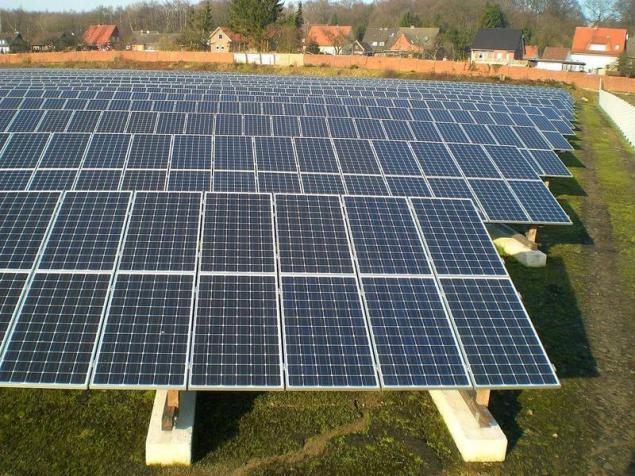
Another factor is that alternative energy sources must be "clean", not producing harmful and polluting substances. As already noted, this implies most often carbon dioxide, but may apply to other emissions — carbon monoxide, sulphur dioxide, nitrogen oxides and others. According to these parameters, nuclear power is not considered to be an alternative source of energy because it produces radioactive waste which is highly toxic and must be stored accordingly.
In all cases, however, this term is used to refer to types of energy that will replace fossil fuels and coal as the predominant forms of energy production in the next decade.
Types of alternative energy sources
Strictly speaking, there are many types of alternative energy. Again, there determination come to a standstill, because in the past, "alternative energy" called methods that are not considered primary or reasonable. But if you take the definition in a broad sense, it will include some or all of these items:
Hydropower. It is the energy produced from hydroelectric dams, when the falling and flowing water (rivers, canals, waterfalls) runs through the device, to rotate the turbine and produce electricity.
Nuclear energy. The energy that is produced in the course of reactions of delayed division. The uranium rods or other radioactive elements heat the water turning it into steam, and steam turns a turbine, generating electricity.
Solar energy. The energy that is obtained directly from the Sun; photovoltaic cell (typically consisting of a silicon substrate, arranged in large arrays) converts sunlight directly into electrical energy. In some cases, the heat produced by sunlight is used for the production of electricity is known as solar thermal energy.
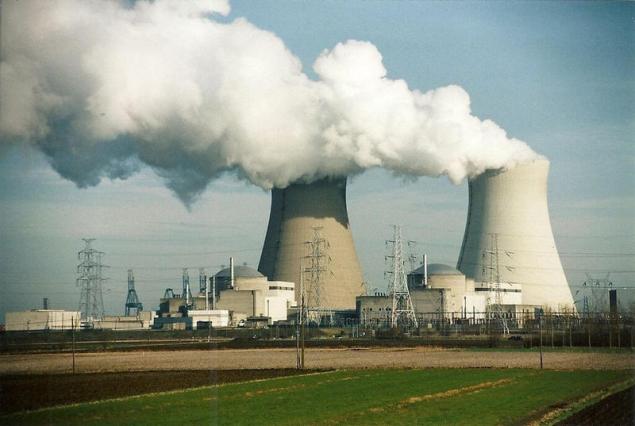
Wind energy. The energy generated by the flow of air; giant wind turbines spinning in the wind generating electricity.
Geothermal energy. This energy produces heat and steam produced by geological activity in the earth's crust. In most cases, the soil above a geologically active zones are placed pipes, leaking steam through the turbine, thus producing electricity.
The energy of the tides. Tidal flow at the coastlines can also be used to generate electricity. The daily changing of the tides causes water to flow through turbines back and forth. Produces electricity that is transferred to coastal power plants.
Biomass. This applies to fuel that is derived from plants and biological sources of ethanol, glucose, algae, fungi, bacteria. They could replace gasoline as a fuel source.
Hydrogen. Energy derived from processes involving hydrogen gas. This includes catalytic converters, in which water molecules are broken apart and reunited in the process of electrolysis; hydrogen and fuel cells, in which the gas is used to power the internal combustion engine or to power a turbine with heating; or nuclear fusion, in which hydrogen atoms merge under controlled conditions, releasing incredible amounts of energy.
Alternative and renewable energy sources
In many cases, alternative sources of energy are also renewable. However, these terms are not completely interchangeable, since many forms of alternative energy sources rely on a limited resource. For example, nuclear power relies on uranium or other heavy elements that need first to get.
At the same time wind, solar, tidal, geothermal and hydroelectricity rely on sources that are completely renewable. The sun is the most abundant energy source of all, and, though restricted by weather and time of day, is an inexhaustible industrial point of view. The wind is also not going away due to the pressure changes in our atmosphere and the Earth's rotation.
Currently, alternative energy is still going through its adolescence. But this picture is changing rapidly under the influence of political pressure, worldwide environmental disasters (droughts, famines, floods) and improvements in the technologies of renewable energies.
For example, as of 2015, the world's energy needs is still predominantly provided by coal (41,3%) and natural gas (21.7 per cent). Hydroelectric and nuclear power accounted for 16.3% and 10.6%, respectively, while "renewables" (solar, wind, biomass, etc.) is just 5.7%.
It has changed a lot since 2013, when world consumption of oil, coal and natural gas amounted to 31.1%, 28.9% and 21,4% respectively. Nuclear and hydropower accounted for 4.8% and 2.45%, and renewable sources is only 1.2%.
In addition, an increase in the number of international agreements on curbing use of fossil fuels and development of alternative energy sources. For example, the Directive on renewable energy, signed by the European Union in 2009, which established goals for use of renewable energy for all member countries by 2020.
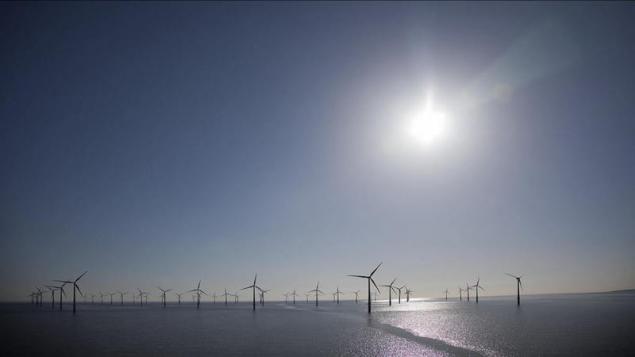
In essence, this agreement implies that the EU will meet at least 20% of the total volume of its energy needs with renewable energy by 2020 and at least 10% of transport fuel. In November 2016, the European Commission revised these goals and has established already 27% of the minimum consumption of renewable energy by 2030.
Some countries have become leaders in development of alternative energy. For example, in Denmark, wind energy provides up to 140% of the country's electricity; the excess supplied to the neighboring countries, Germany and Sweden.
Iceland, due to its location in the North Atlantic and its active volcanoes, has achieved 100% dependence on renewable energy sources in 2012 due to a combination of hydropower and geothermal energy. In 2016, Germany adopted a policy of phasing out dependence on oil and nuclear energy.
The long-term prospects of alternative energy are extremely positive. According to the report 2014 of the International energy Agency (IEA), photovoltaic solar energy and solar thermal energy will account for 27% of global demand by 2050, making it the largest source of energy. Possible, thanks to advances in synthesis, fossil fuel sources will be hopelessly obsolete by 2050. published
Source: hi-news.ru/science/prosto-o-slozhnom-chto-takoe-alternativnaya-energetika.html
While most of the concepts of alternative energy are not new, only in the last few decades this issue has become finally relevant. Due to improvements in technology and production, the cost of most forms of alternative energy decreased while the efficiency increased. What is alternative energy, speaking in simple and clear words, what is the probability that it will become mainstream?
Obviously, there are still some disputes about what constitutes "alternative energy" and what this phrase can be applied. On the one hand, this term can be attributed to the forms of energy that do not increase the carbon footprint of mankind. So it can include nuclear facilities, hydroelectric power and even natural gas and "clean coal."
On the other hand, this term is also used to refer to what is now considered an unconventional energy — solar, wind, geothermal, biomass and other recent additions. This kind of classification excludes such methods of energy production, like hydroelectric power, which exist more than a hundred years and represent a fairly common phenomenon in some regions of the world.

Another factor is that alternative energy sources must be "clean", not producing harmful and polluting substances. As already noted, this implies most often carbon dioxide, but may apply to other emissions — carbon monoxide, sulphur dioxide, nitrogen oxides and others. According to these parameters, nuclear power is not considered to be an alternative source of energy because it produces radioactive waste which is highly toxic and must be stored accordingly.
In all cases, however, this term is used to refer to types of energy that will replace fossil fuels and coal as the predominant forms of energy production in the next decade.
Types of alternative energy sources
Strictly speaking, there are many types of alternative energy. Again, there determination come to a standstill, because in the past, "alternative energy" called methods that are not considered primary or reasonable. But if you take the definition in a broad sense, it will include some or all of these items:
Hydropower. It is the energy produced from hydroelectric dams, when the falling and flowing water (rivers, canals, waterfalls) runs through the device, to rotate the turbine and produce electricity.
Nuclear energy. The energy that is produced in the course of reactions of delayed division. The uranium rods or other radioactive elements heat the water turning it into steam, and steam turns a turbine, generating electricity.
Solar energy. The energy that is obtained directly from the Sun; photovoltaic cell (typically consisting of a silicon substrate, arranged in large arrays) converts sunlight directly into electrical energy. In some cases, the heat produced by sunlight is used for the production of electricity is known as solar thermal energy.

Wind energy. The energy generated by the flow of air; giant wind turbines spinning in the wind generating electricity.
Geothermal energy. This energy produces heat and steam produced by geological activity in the earth's crust. In most cases, the soil above a geologically active zones are placed pipes, leaking steam through the turbine, thus producing electricity.
The energy of the tides. Tidal flow at the coastlines can also be used to generate electricity. The daily changing of the tides causes water to flow through turbines back and forth. Produces electricity that is transferred to coastal power plants.
Biomass. This applies to fuel that is derived from plants and biological sources of ethanol, glucose, algae, fungi, bacteria. They could replace gasoline as a fuel source.
Hydrogen. Energy derived from processes involving hydrogen gas. This includes catalytic converters, in which water molecules are broken apart and reunited in the process of electrolysis; hydrogen and fuel cells, in which the gas is used to power the internal combustion engine or to power a turbine with heating; or nuclear fusion, in which hydrogen atoms merge under controlled conditions, releasing incredible amounts of energy.
Alternative and renewable energy sources
In many cases, alternative sources of energy are also renewable. However, these terms are not completely interchangeable, since many forms of alternative energy sources rely on a limited resource. For example, nuclear power relies on uranium or other heavy elements that need first to get.
At the same time wind, solar, tidal, geothermal and hydroelectricity rely on sources that are completely renewable. The sun is the most abundant energy source of all, and, though restricted by weather and time of day, is an inexhaustible industrial point of view. The wind is also not going away due to the pressure changes in our atmosphere and the Earth's rotation.
Currently, alternative energy is still going through its adolescence. But this picture is changing rapidly under the influence of political pressure, worldwide environmental disasters (droughts, famines, floods) and improvements in the technologies of renewable energies.
For example, as of 2015, the world's energy needs is still predominantly provided by coal (41,3%) and natural gas (21.7 per cent). Hydroelectric and nuclear power accounted for 16.3% and 10.6%, respectively, while "renewables" (solar, wind, biomass, etc.) is just 5.7%.
It has changed a lot since 2013, when world consumption of oil, coal and natural gas amounted to 31.1%, 28.9% and 21,4% respectively. Nuclear and hydropower accounted for 4.8% and 2.45%, and renewable sources is only 1.2%.
In addition, an increase in the number of international agreements on curbing use of fossil fuels and development of alternative energy sources. For example, the Directive on renewable energy, signed by the European Union in 2009, which established goals for use of renewable energy for all member countries by 2020.

In essence, this agreement implies that the EU will meet at least 20% of the total volume of its energy needs with renewable energy by 2020 and at least 10% of transport fuel. In November 2016, the European Commission revised these goals and has established already 27% of the minimum consumption of renewable energy by 2030.
Some countries have become leaders in development of alternative energy. For example, in Denmark, wind energy provides up to 140% of the country's electricity; the excess supplied to the neighboring countries, Germany and Sweden.
Iceland, due to its location in the North Atlantic and its active volcanoes, has achieved 100% dependence on renewable energy sources in 2012 due to a combination of hydropower and geothermal energy. In 2016, Germany adopted a policy of phasing out dependence on oil and nuclear energy.
The long-term prospects of alternative energy are extremely positive. According to the report 2014 of the International energy Agency (IEA), photovoltaic solar energy and solar thermal energy will account for 27% of global demand by 2050, making it the largest source of energy. Possible, thanks to advances in synthesis, fossil fuel sources will be hopelessly obsolete by 2050. published
Source: hi-news.ru/science/prosto-o-slozhnom-chto-takoe-alternativnaya-energetika.html
Ideas for living room design: a bold combination of grey and yellow
The system of self-balancing Honda Riding Assist
